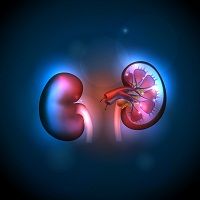Diabetic Kidney Disease: New Consensus Document
Prompted by almost-epidemic rates of diabetes in the United States and globally, the American Diabetes Association recently convened a consensus panel to examine diabetic kidney disease, one of the most frequent complications associated with diabetes.

Prompted by almost-epidemic rates of diabetes in the United States and globally, the American Diabetes Association (ADA) recently convened a consensus panel to examine diabetic kidney disease (DKD), one of the most frequent complications associated with diabetes. DKD is associated with approximately half of all end-stage renal disease (ESRD) in the developed world. DKD’s costs are staggering. Most patients with ESRD are covered by Medicare, and Medicare beneficiaries consumed nearly $25 billion in 2011 for DKD-related expenditures.
The American Journal of Kidney Disease has published Diabetic Kidney Disease: A Report From an ADA Consensus Conference in its October 2014 issue. This report was developed by a team of endocrinologists, nephrologists, and other subject matter experts. The American Society of Nephrology and the National Kidney Foundation collaborated with the ADA. The report addresses patient management, current practices, and new directions.
Among the many findings and recommendations in this comprehensive document are the following:
- Although increased albuminuria and low estimated glomerular filtration rate indicate DKD, both are inexact and better identification and monitoring methods are needed.
- Prevention of cardiovascular disease currently relies on management of dyslipidemia and control of hypertension.
- Blood pressures below 140/90 mm are recommended in diabetic patients with DKD. Clinicians need to be aware that dual rennin angiotensin-aldosterone system blockade is no longer recommended due to risk of hyperkalemia and acute kidney injury.
- Glycemic control remains the cornerstone of good care, but as DKD increases in severity, intensive glycemic control can cause hypoglycemia. Patients with low eGFR are at highest risk.
- The number of oral antidiabetic agents available to patients with DKD is limited due to decreased drug clearance and side effects. Management is further complicated because HbA1c falls as red blood cell turnover increase; patients must monitor blood glucose to achieve glycemic goals and decrease risk of hypoglycemia.
This consensus document also addresses pediatric populations and stresses the need for interdisciplinary care. This is a challenging document in terms of reading, but DKD’s complexity demands thorough, thoughtful examination.